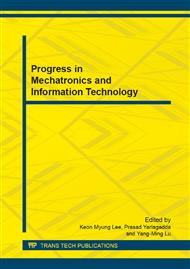p.716
p.720
p.727
p.735
p.739
p.746
p.750
p.755
p.761
A Comparative Study of Novel Permanent Magnet Arc Guideway Motors Based on Three-Dimensional Electromagnetic Field Analysis
Abstract:
A novel PM arc guideway motor (PMAGM) is developed due to the drawback of the conventional motor reciprocating within certain angle. The PMAGM can directly drive load to make reciprocating motion within a limited angle with advantages of simplification, reliability, high efficiency, etc.. Aiming at the permanent magnet (PM) magnetization and solenoid coil electrifying modes, the PM deflection angle is parameterized and the influence on electromagnetic force has been analyzed between different magnetization and electrifying modes. Results show that electromagnetic force in Y direction magnetized along the external field force lines at proposal 1 is 51.23% higher than that of vertical magnetization, and the electromagnetic resultant force increases by 45.91%. As the angle of the PM deflection within 3o, the electromagnetic force in X direction points to the right, which is not good for PM slidable assembly swing. Based on comprehensive analysis of the advantages and disadvantages of several electrifying modes, the electricity combination under full swing angle is optimized.
Info:
Periodical:
Pages:
739-745
Citation:
Online since:
November 2013
Authors:
Price:
Сopyright:
© 2014 Trans Tech Publications Ltd. All Rights Reserved
Share:
Citation:


